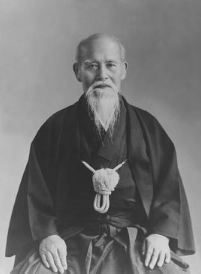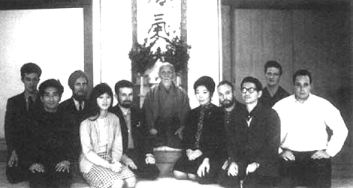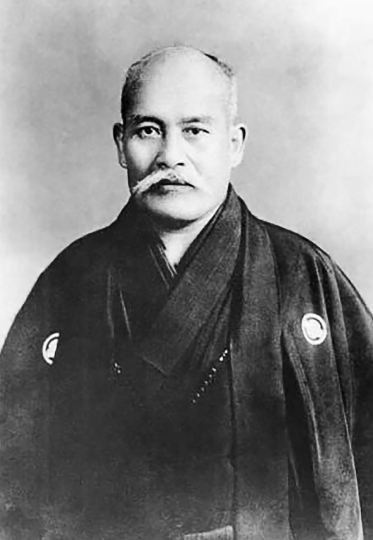Introduction
In the modern times, learning self-defense has become important. There are different techniques and types of martial arts which are used for the purpose of self-defense. A very common Japanese approach for self-defense is Aikido which is based on the concept of defending oneself while not promoting any kind of violence or aggressiveness. The ultimate aim of this is to protect oneself while also protecting the attacker in the way that he is not injured. The word Aikido is translated as “the way of harmonious spirit”. It is considered as a modern approach to Japanese martial arts.
About the Master
Aikido was developed by Morihei Ueshiba who a master of martial studies, philosophy, and religious beliefs is. Many Aikido practitioners call him “The Great Teacher” for his unique and exceptional approach towards martial arts. The technique was initially developed in the early 1920s but was not considered as a proper approach to the martial arts, until Ueshiba had three major realizations following which he made the non-violent technique into a proper approach which became to be known as Aikido. This occurred in 1942 when Ueshiba’s group joined the Dai Nippon Butoku Kai which was a major martial arts organization.
Fundamentals of Aikido
Aikido as an art comprises several components or principles each of which has its own relevant importance. The first is “irimi” which means entering straight into the technique without any extras. The second is “atemi” which is the key component of non-violence as it is based on striking the body rather than breaking or twisting the key bones. The third principle is “kokyu-ho” which stands for breathing control and maintaining respiration. It is important to maintain the breath so as to not have fatigue too early. “Sankaku-ho” is another principle which refers to the triangular angle of attack and movements. “Tenkan” is a fundamental which is based on redirecting the momentum of the opponent.
The fundamentals of Aikido also include other various techniques which include throws and joint locks as well as a weapon-based system including the “bokken, tanto, and Jo”
The Three Realizations
Ueshiba has stated that it is due to the three major realizations in his life that he developed the principles of Aikido. These realizations were just like an eye-opener as well as impacted Ueshiba on a spiritual level. The first experience occurred in 1925 when Ueshiba defeated a naval officer without hurting the officer or injuring him even minorly. It was surprising that the officer was carrying a wooden katana at that time.
First Realization
Ueshiba recalls this event as an important one where he felt that the universe had a massive change. He felt as if a unique spirit emerged suddenly which changed the way his body felt. The first realization was a spiritual one which made him aware of the mind of god and god’s love. Ueshiba recalls it as the spirit of loving protection which emerged into him. He also added the fact that True Bodo was immediately immersed within him which was the acceptance of universe’ spirit and keeping the peace of world while not having any kind of violence and aggression for the attackers.
Second Experience
The second experience was in 1940 when he was engaged in a ritual purification process of misogi. He recalled this event by saying that he felt as if he forgot all of his martial art techniques and everything felt new. Subjects were more directed towards the cultivation of life, knowledge, and not in any connection with violence. From this time, Ueshiba started to consider whether the approach towards violence is essential for self-defense or not. He started to think that the purpose of defense is to not injure, and attack rather than just save yourself.
Third Experience
The third experience of Ueshiba was probably the most important one due to the fact that it actually led him to develop Aikido. During the times of World War II, Ueshiba had a vision for the “Great Spirit of Peace”. He started to believe that the way how a warrior should perform has been majorly misunderstood. He felt that instead of believing in killing and destruction, a warrior is the one who prevents such events from happening which itself is through the Art of Peace, The Power of Love.
Initial Challenges
During his life Ueshiba was invited by the Imperial Japanese Naval Academy to train the cadets and provide them with the right instructions on martial arts. However, Aikido was judged as being a too technical and more philosophical approach as compared to Karate or other forms of martial arts. Another challenge for this new technique was that when the Ueshiba family set up their home in Shirokone District in Japan, the house was considered to be too small for the students of Aikido. Therefore, a larger place was needed which was built after a later time.
Moreover, the approach of Aikido was officially developed right after World War II. However, it was prohibited to provide any kinds of training regarding martial arts after the war. Forcefully, Ueshiba had to secretly train and develop his students without the legal permission.
Religious Background
Aikido is an approach which was heavily dependent upon the religious aspect and factor as well. Since Ueshiba left Hokkaido in 1919, he met his Master OnisaburoDeguchi who was the leader of “Omoto-kyo” religion in Ayabe. Ueshiba was not only personally impressed by Deguchi but also found the religion to be quite fulfilling as it was based on the attainment of utopia during one’s life. He found out that the basis of “Omoto-kyo” is fully based on love and compassion especially for those that are causing harm to others. The resolution was not only a new one but was also quite moving for Ueshiba which is why he started focusing on Aikido technique.
Open Introduction of Aikido
In 1951, Aikido was publicly introduced to the rest of the world by Minoru Mochizuki while he was on a visit to France. He displayed the Aikido techniques to his students who were very impressed. Tadashi Abe, one year later, came as the official representative of AikikaiHombu and planned to remain in France for the coming 7 years. Furthermore, Kenji Tomiki who was also a senior student of Ubeishi toured in 15 continental states of the United States in 1953.
In the same year, Koichi Tohei also went for a full year where he set up a dojo that also taught the basics of Aikido. The United Kingdom started to follow the Aikido approach in 1955 while Italy considered it in 1964. As time passed by, Aikido started to become more popular and famous among the people as many modern nations such as Germany and other European countries started to accept it as a technique for self-defense. Aikido dojo was also introduced in Australia in 1965. With such rapid rise in a period of 15 years, Aikido not only became popular, but dojos were opened in almost all the major countries of the world.
More Prospects
The basic level of Aikido developed by Ueshiba is still practiced in a few parts of the world today. However, modern techniques and further improvements have been made which includes the addition of many other styles as well, most of which have been done by Ueshiba’s students. Amongst the styles added after his death, Iwama style is one of the most significant improvement.
Conclusion
Self-defense and martial arts are two of the most important aspects of fighting. The unique approach of Aikido deals with having love and compassion towards the enemy while saving yourself is considered ideal. It clearly signifies that even without aggression and violence, some of the top matters can be resolved without causing any kind of major indiscipline. The credit for efforts to develop and promote Aikido goes to MoriheiUeshiba and his major students.




